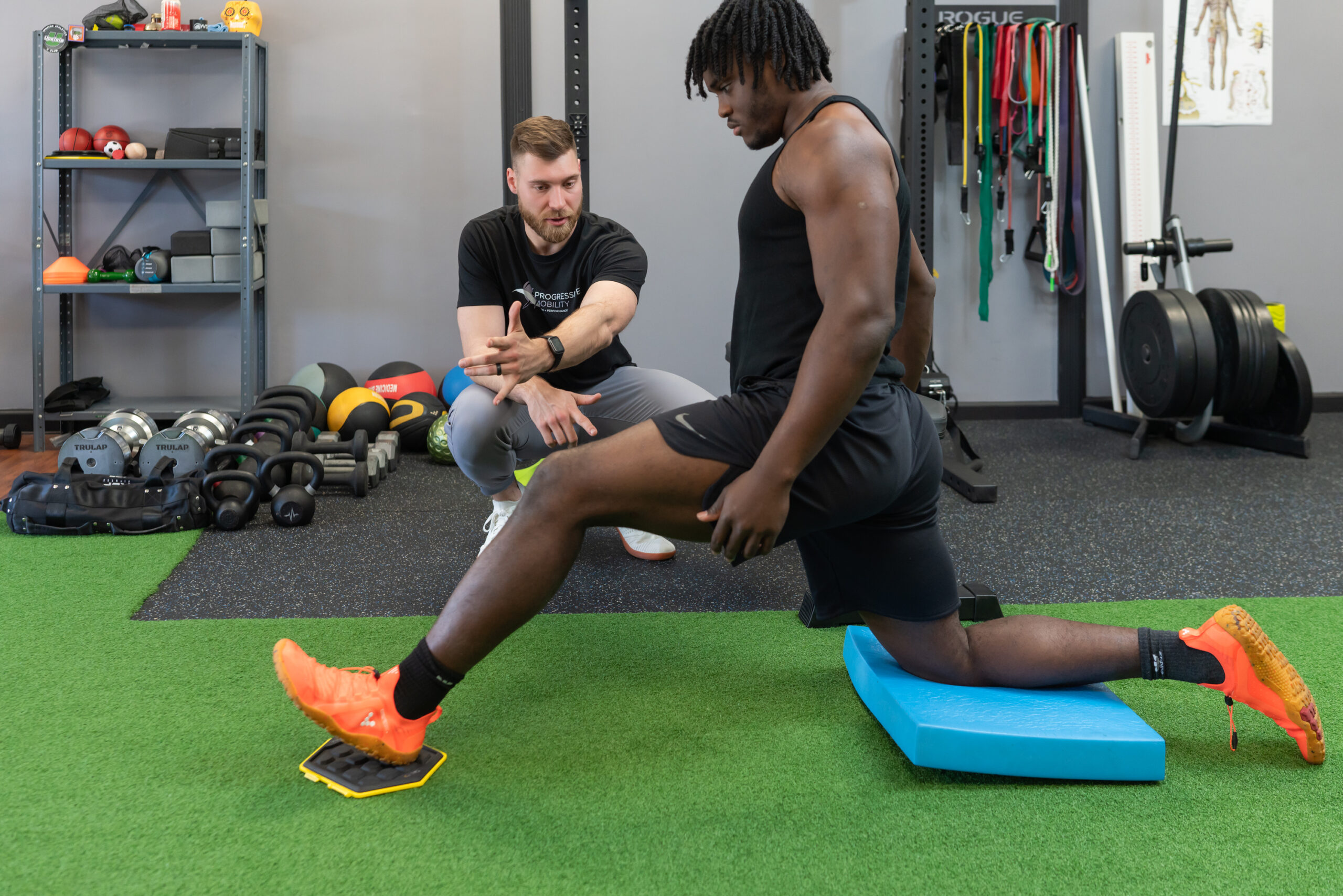When it comes to squats, one of the most common questions we hear in the clinic is, “How should I put my feet?” The answer is, as with many things in physical therapy and fitness, “it depends.” Your ideal foot position for squatting depends on factors like your anatomy, mobility, and personal comfort. But before we dive into the different positions, let’s emphasize one critical point: the benefits of squatting far outweigh the debate over foot placement.
Whether you’re new to squatting or a seasoned lifter, squats are a foundational movement that offer immense benefits. They help build strength, improve mobility, enhance joint health, and contribute to overall functional fitness. Not squatting at all? You’re missing out on a world of benefits for your body.
Now, let’s explore some common foot positions for squats and what they mean for you.
1. Toes Forward (Neutral Position)
In this position, your feet are roughly shoulder-width apart and pointing straight ahead. This stance is often used in functional fitness and general strength training because it encourages balanced engagement of the quads, hamstrings, and glutes. However, not everyone’s hip anatomy or ankle mobility supports this position comfortably. If you feel strain in your knees or lower back, a slight adjustment may be needed.
2. Toes Out (Externally Rotated Position)
Toes-out squats involve angling your feet outward, typically around 15-30 degrees. This position is common for individuals with wider hips or limited ankle dorsiflexion. Turning your toes out can help open up the hips and provide more depth in your squat. However, be mindful of your knee alignment—your knees should track in the same direction as your toes to prevent undue stress on the joints.
3. Wide Stance
A wider squat stance places your feet farther apart than shoulder-width. This position often shifts the emphasis to the inner thighs and glutes. It’s popular in powerlifting and can be more comfortable for individuals with limited hip mobility. Just like with toes-out squats, knee alignment is crucial here.
4. Narrow Stance
In a narrow stance squat, your feet are placed closer together. This variation tends to emphasize the quads and can be beneficial for building strength in this area. However, a narrow stance requires significant ankle and hip mobility, so it’s not suitable for everyone.
5. The Asymmetrical Foot Position
Sometimes, individuals naturally find themselves favoring an asymmetrical stance due to differences in limb length, hip mobility, or prior injuries. While this isn’t a traditional position, it’s worth noting that everyone’s squat will look slightly different, and adjustments can help accommodate your unique body mechanics.
Key Takeaways
No matter which foot position feels most natural to you, a few universal principles apply to all squats:
- Form First: Focus on maintaining proper alignment and technique. Your knees should track over your 2nd and 3rd toes, and your back/pelvis should remain neutral.
- Experiment and Adapt: There’s no one-size-fits-all approach to squats. Experiment with different foot positions to find what works best for your body.
- Progress Gradually: Build strength and mobility over time, and don’t hesitate to seek guidance from a physical therapist or fitness professional if you’re unsure.
The Bottom Line
Squatting is one of the most effective exercises for building lower body strength, enhancing mobility, and improving overall functional movement. While foot placement is important, it’s not as critical as simply incorporating squats into your routine. The benefits of squatting—including improved strength, better joint health, and increased daily functionality—far outweigh the nuances of foot positioning.
At Progressive Mobility, we’re here to help you move better and feel stronger. If you have questions about your squat form or want to address mobility issues that may be limiting your range of motion, we’re just a call away. Let’s find the right squat for you and unlock your full potential! For more information, call (864)485-5910.



